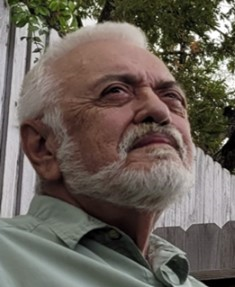An overview of the land and ecoregions of East Texas.
Home » Speakers Bureau » Speakers Bureau » From the Gulf to the Prairies
An overview of the land and ecoregions of East Texas.

Writer and lecturer on native plants, water conservation, soil conservation, and organics. He grew up on a farm in South Louisiana and spent his time as a youth wandering through pine forests, cypress swamps, and open fields, tending a small herd of cattle, bailing hay, milking, raising chickens and attending elementary school in a four-room schoolhouse. He spent six years in a Catholic seminary, receiving a classical education. In college, he worked in the oil fields to fund his education. He has been a journalist, an investment banker, and a political analyst. He has written hundreds of articles both online and in print. He maintains a website (gulfcoastgardening.com) in which he promotes organic gardening, native plants, soil culture, rainwater harvesting, drip irrigation and water conservation.
He also helped write and then administer The Woodlands Water Conservation Program, which helped reduce the per person water consumption in The Woodlands from 200 gallons per day to 91 gallons per day. As a result of that, his department was awarded the coveted Blue Legacy Award from the Texas Water Development Board. He was also named Outstanding Water Conservation Leader of the Year by the Gulf Coast Water Symposium, and educator of the year by the Montgomery County Master Gardeners. He helped promote, raise funds and was on the group to design and supervise the construction of two community gardens in The Woodlands.
He and his wife now live in Willis, Texas, where he writes and gardens. He gives about 100 presentations a year. Topics include: Backyard Composting; Container Gardening; Gardening Organically; Fall is the Time to Plant Spring-flowering Plants; Preparing Your Garden for Fall and Winter; Beautiful Native Plants, Butterflies, and Moths; Soil - The Living Layer of Earth; Insects - the Good, Bad, and Indifferent; The Future of Texas Water; Backyard Rainwater Harvesting; Drip Irrigation for Your Garden; Basics of Plant Taxonomy; Texas "Weeds"; and Waterwise Landscaping Trends.
State Office Address:
Native Plant Society of Texas
PO Box 3017
Fredericksburg, TX 78624
Become an important part of a statewide community with over 5,000 members, who are united in our mission to promote Texas native plants!
Native Plant Society of Texas is a 501(3)(c) nonprofit organization This website and all content Copyright © Native Plant Society of Texas. All rights reserved. Content may not be reprinted in whole or in part without written permission. Contact the Webmaster.